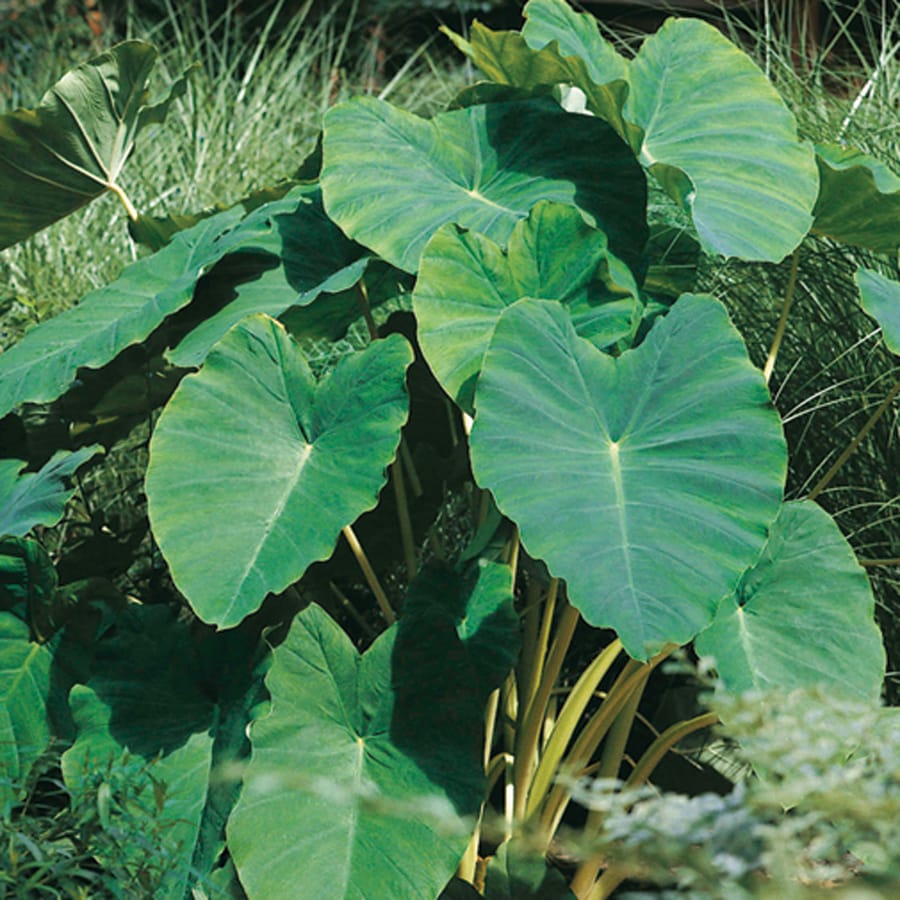Elephant Ear Bulb Turned To Mush
Have you ever experienced the disappointment of seeing your elephant ear bulb turned to mush? It's a heart-wrenching sight, especially when you have put in so much effort and care into nurturing it. If you're struggling with this problem, don't worry, you're not alone. In this post, we will dive deeper into the causes behind this phenomenon and how you can prevent it from happening again.
The Pain Points of Elephant Ear Bulb Turned to Mush
Having your elephant ear bulb turned to mush is more than just a waste of time and effort. It can also be an expensive problem, especially if you've invested in high-quality bulbs. On top of that, it can be discouraging to see your beloved plants deteriorate before your eyes.
One of the main pain points of elephant ear bulb turned to mush is the loss of your investment. At the same time, it can also affect your motivation to continue gardening. So what causes this problem, and how can you prevent it?
Understanding the Target of Elephant Ear Bulb Turned to Mush
Elephant ear bulbs require specific growing conditions to thrive, just like any other plant. However, they are susceptible to several issues that can cause them to perish, one of which is rotting. Rotting can occur due to several reasons such as overwatering, poor drainage, root damage, and pests.
When the bulb is exposed to excess moisture, it creates a favorable environment for fungus and bacteria to grow. This results in the bulb turning mushy and rotting. In some cases, the entire plant can die if the infection has spread too far.
Main Points on the Prevention of Elephant Ear Bulb Turned to Mush
Preventing elephant ear bulb turned to mush requires a proactive approach. Here are some tips to set you on the right track:
- Plant your bulb in well-draining soil and avoid overwatering.
- Avoid planting the bulb in areas that are prone to waterlogging.
- Remove any damaged roots or bulbs before planting.
- Ensure adequate airflow around the plant.
- Use insecticides or fungicides to treat any pest or fungal infections.
My Personal Experience with Elephant Ear Bulb Turned to Mush
The first time I encountered this problem, it was devastating. I had invested so much time and energy into growing my elephant ear bulbs. However, when the bulbs turned to mush, I realized that I had made a mistake with my watering regime. I had watered them too frequently and failed to provide appropriate drainage.
After extensive research on how to prevent this issue, I implemented the tips mentioned earlier, and I'm happy to report that my subsequent attempts at growing elephant ear bulbs have been successful.
Preventing Rotting in Elephant Ear Bulbs
One of the best ways to prevent rotting in elephant ear bulbs is to ensure that the soil is well-draining. You can achieve this by using a mixture of sand, soil, and peat moss when planting your bulbs.
In addition, avoid watering your bulbs too frequently and ensure that the soil has dried out before watering again. If you notice any signs of root or bulb damage, remove them immediately to prevent the spread of the infection.
Treating Pest and Fungal Infections in Elephant Ear Bulbs
If you notice any pest or fungal infections in your elephant ear bulbs, it's crucial to act fast. Use fungicides or insecticides to treat the infection and ensure that you follow the instructions carefully. It's also important to remove any infected bulbs or leaves to prevent the spread of the infection.
Final Words on Preventing Elephant Ear Bulb Turned to Mush
Elephant ear bulbs are exquisite plants that require a bit of extra attention when growing. By ensuring that you plant them in well-draining soil, avoid overwatering, and act fast in treating any pest or fungal infections, you can prevent your bulbs from turning to mush. Don't give up on growing these beautiful plants just yet!
Conclusion of Elephant Ear Bulb Turned to Mush
Elephant ear bulbs are beautiful plants that require a bit of extra care and attention to grow successfully. Rotting is a common issue that can occur due to overwatering, poor drainage, root damage, and pests. By following the tips mentioned in this post, you can prevent your bulbs from turning to mush and ensure that they thrive. Remember to act fast in treating any infections and remove any damaged bulbs or roots to prevent the spread of the infection.
Gallery
5 Count Elephant Ear Bulbs At Lowes.com

Photo Credit by: bing.com / bulbs elephant ear ears count pack dormant lowes patio small urban
3 Elephant Ear Bulbs - Walmart.com - Walmart.com

Photo Credit by: bing.com / taro plant colocasia gigantea gallons soil
My Elephant Ear Bulb Is Starting To Do Magical Things. I Just Cant

Photo Credit by: bing.com / elephant bulb magical
Amazon.com : Jumbo Elephant Ear Bulb - Colocasia Esculenta 19/20 In

Photo Credit by: bing.com / bulbs
Top 5 Giant Elephant Ear – Plants, Seeds & Bulbs – Tulria

Photo Credit by: bing.com / elephant ear bulbs seeds esculenta colocasia giant plants bulb farms holland taro tulria